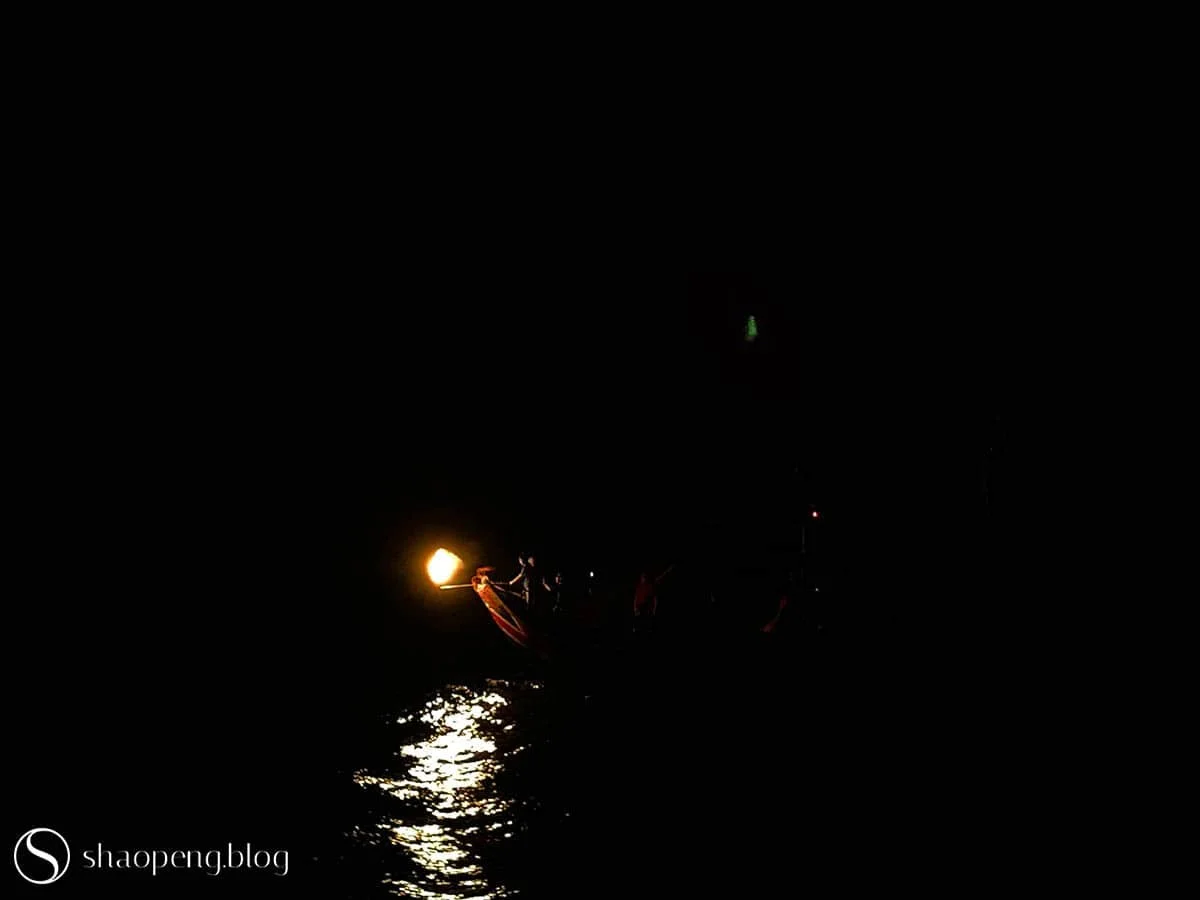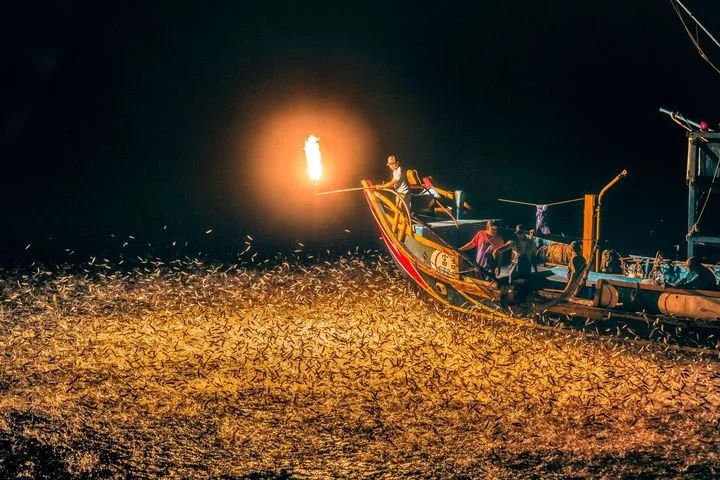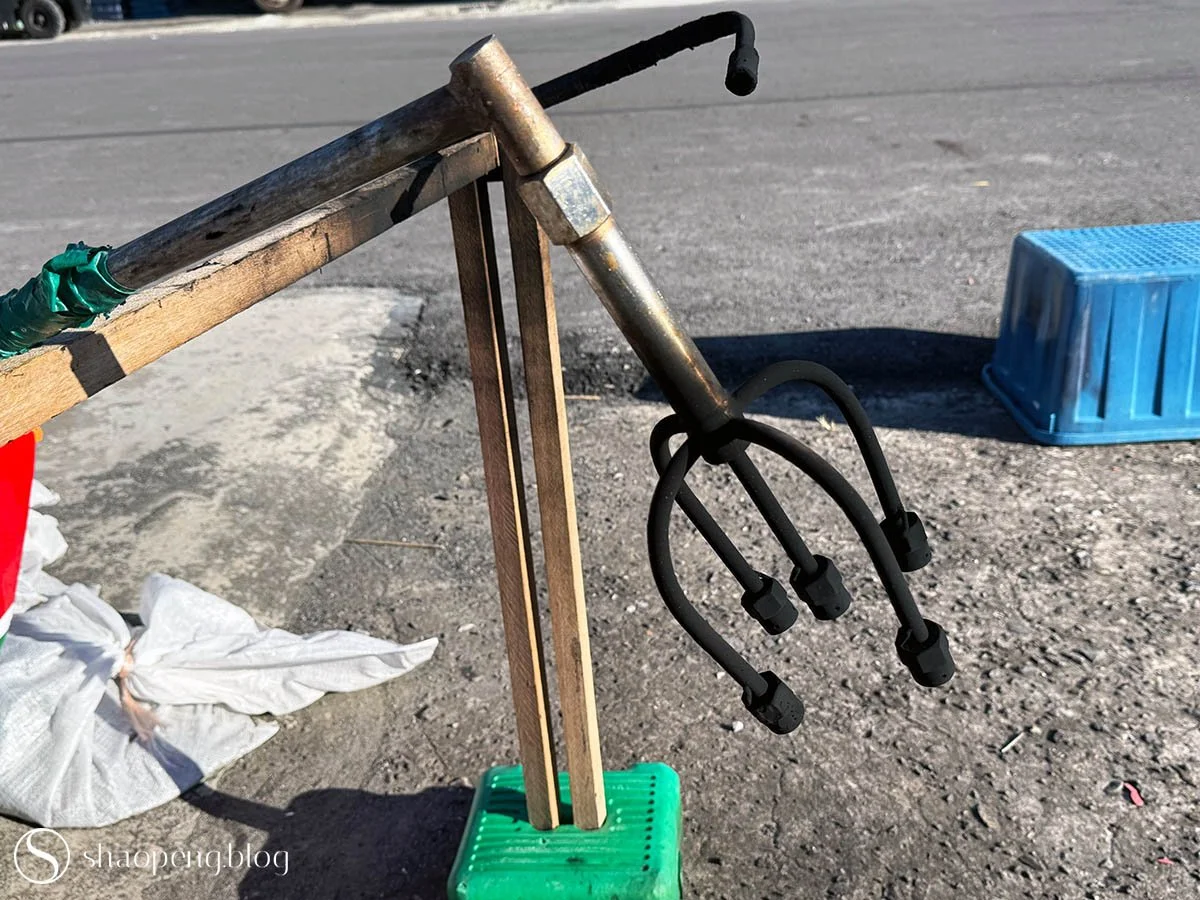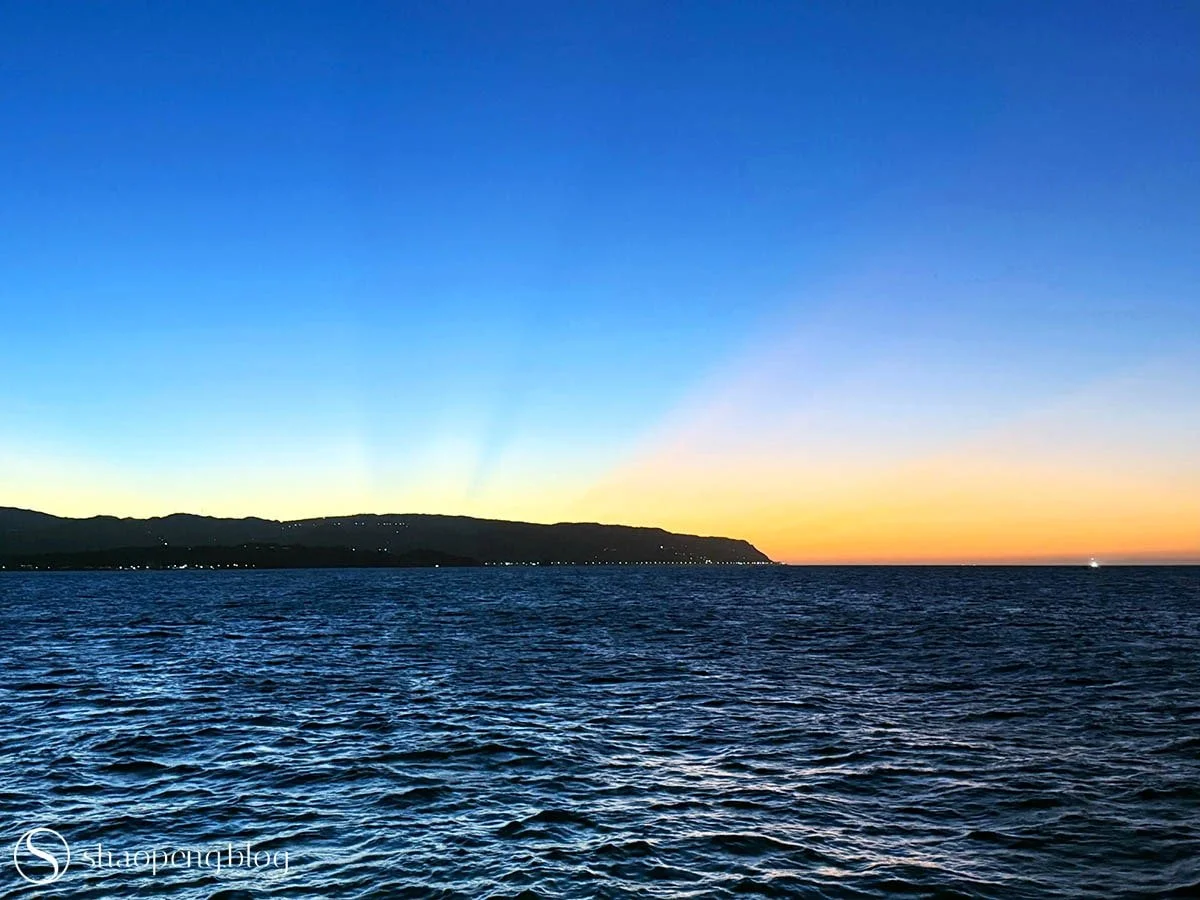Dancing Flames on the Sea: Exploring the World’s Only Bonfire Fishing Tradition
Off Taiwan’s northern coast, and only during the summer, a rare spectacle unfolds as flames dance across the waves — keeping alive the world’s last sulfur fire fishing tradition.
Sense of Wander: ★★★★★
With flames lighting the sea, fire chief Jian Shikai hunts for sardines using sulfur fire fishing — a century-old tradition found only in Taiwan.
JINSHAN, New Taipei — Summer marks the height of sardine season along Taiwan’s northern coast. Drawn to light, these fish have long guided the rhythms of an unusual but fascinating tradition: Sulfur Fire Fishing, known locally as Beng Huo Zai.
Invented over a century ago, the technique relies on a simple but brilliant chemical reaction. The fire chief pours water onto sulfur stones, producing acetylene gas. Once lit, the gas erupts with a deep bong — a sound that gave the method its onomatopoeic name.
Each summer, just after dusk, fishing boats head out from Huanggang Port and glide through dark waters. For a few fleeting seconds, flames flicker at the bow like beacons in a ritual dance, luring light-sensitive fish such as sardines and anchovies. Torch in hand, the “fire chief” watches the water closely. If lucky, the sea responds with an ocean of silvery fish leaping toward the light.
Fuji No. 268 is the only sulfuric fire fishing boat in Taiwan. Image courtesy of the North Coast & Guanyinshan National Scenic Area Administration.
Now a vanishing tradition, Sulfur Fire Fishing was officially designated as a cultural asset of New Taipei City in 2015, thanks to the combined efforts of researchers, private operators, and local authorities. Huanggang remains the only place in Taiwan where this method is still practiced. Recognised as one of the eight scenic wonders of the Jinshan area, it carries both heritage and rarity.
At the heart of this preservation effort is Jian Shikai, a young fire chief who captains the last sulfur fire fishing vessel in Taiwan — the Fuji No. 268. In 2022, Jian and local fishermen established the New Taipei City Sulfur Fire Fisheries Development & Marketing Cooperative (新北市蹦火漁業發展運銷合作社), blending tradition with tourism. Their programs offer both land and sea experiences in Huanggang.
A mural painting depicting a fire chief lighting the gas is found outside the Sulfur Fire Fisheries Development & Marketing Cooperative building in Huanggang.
Curious to witness this rare practice, we arrive at Huanggang Port one afternoon. Nestled just south of Jinshan’s Shitou Mountain — a natural windbreak against the northeastern monsoon — the port enjoys a sheltered location. Rows of fishermen’s homes face the sea, though the streets lie still in the midday heat, broken only by the occasional car passing through.
At 4:30 PM, our guide gathers us for a closer look at Fuji No. 268. At first glance, the boat seems unremarkable. But then we’re shown what sets it apart as a sulfur fire fishing vessel: an orange tank filled with sulfur stones, two adjacent water tanks, and a narrow tube connecting them to the torch at the bow — where fire meets sea. This technique, we’re told, is believed to have originated with the Indigenous Basay people.
After a short demonstration, our guide invites anyone willing to try igniting the gas. I step forward. Kneeling down, I add a few drops of water to the sulfur stone on the ground, and light it with a gas lighter. The gas catches with ease — and for a moment, it feels like magic. When we ask where these stones come from, we learn that Taiwan no longer produces them; they’re now imported from Japan and restricted to licensed use.
In Huanggang, you’ll find Taiwan’s last remaining sulfur fire fishing boat: Fuji No. 268.
Our guide explains the origin and purpose of the sulfur stones in sulfur fire fishing.
The orange container holds the sulfur stones, while the water tanks beside it supply the water needed to generate the flammable gas.
The design of this torch traces back to the Indigenous Basay people, who traditionally used bamboo poles topped with fuel and set alight to attract fish at sea.
As the sun begins to sink, we board our boat and head toward the open sea, cruising past the coastline of Yehliu Geopark. Though the Queen’s Head Rock isn’t visible from this angle, the sunset surprises us with what our guide calls the “northern aurora” — a rare spectacle unique to this stretch of coast.
While waiting for nightfall, we try our luck with longline fishing. It’s been more than a decade since I last held a rod like this. My line keeps coming up empty, but others in the group manage a modest catch.
A fishing boat can be seen in the distance, possibly one that specialises in torchlight net fishing for neritic squid.
Off Taiwan’s northern coast, the sunset paints the sky with sublime streaks of colour, reminiscent of the aurora borealis.
When night finally drapes over us, stars begin to appear. Overhead, the sky is strewn with twinkling constellations. I spot the Big Dipper — a familiar shape that brings back memories of a stargazing night in the deserts of AlUla, just a few months ago.
Then, just ahead, we see Fuji No. 268. At the bow stands Jian, torch in hand, like a lone detective absorbed in thought. We follow in silence and with great anticipation, hoping to witness the sea respond. For nearly an hour, Jian scans the waters, lighting the torch again and again. No sardines rise. But just once, I catch sight of a single tiny fish leaping from the surface — a brief flicker of hope, gone in a heartbeat.
Jian keeps searching until the last minute, yet we return without a catch. Am I disappointed? A little. But I also understand: nature never guarantees. The act of searching, the patient waiting, the quiet persistence — that, too, is part of the experience. Perhaps the sardines are elsewhere tonight. Perhaps they, too, are on vacation.
By weaving a vanishing tradition into cultural tourism, this century-old fishing method finds new life. What was once solely industrial becomes a shared story — one that supports local fishermen while offering us a window into what fishing once was — here — and what it might become.
Tips for wanderer — If you’re interested in joining the tour to witness this unique fishing tradition, visit their official website for more details. Remember, it’s only available during the summer!









